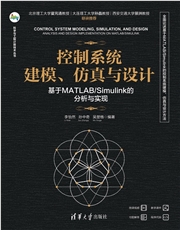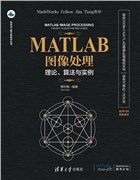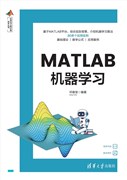





定价:128元
印次:1-1
ISBN:9787302626527
出版日期:2023.07.01
印刷日期:2023.07.31
图书责编:盛东亮
图书分类:零售
本书针对数学建模中常用的数值算法的实现编写了MATLAB程序,帮助读者使用相关算法实现科学问题的求解。 全书共16章,首先简单介绍了MATLAB基本运算,然后重点介绍了MATLAB数学建模中常用数值算法的实现方法,包括常用运算、矩阵分解、特征值与特征向量、线性方程组、非线性方程与方程组、数据插值、曲线拟合、数值积分、常微分方程组、数据分析、极值问题、数学变换与滤波、序列排序、特殊函数求值等内容;附录部分给出了MATLAB自带的数学函数,方便读者查阅验证。本书提供了全部MATLAB程序代码,方便读者直接调用。本书程序代码按照算法的实现流程编写,尽量少地采用MATLAB内置函数。 本书算法均通过MATLAB函数实现,可供广大科研工作者、工程技术人员直接使用。本书特别适合参加数学建模大赛的选手选用,也可以作为高等院校数值分析课程的配套参考书。
温正:北京航空航天大学博士后,现就职于中国航天科技集团,精通MATLAB、Mathematica、Lingo等工程仿真计算软件;熟练掌握利用MATLAB解决数学建模、科学计算、算法优化、机器学习等工程应用问题;在国内外期刊发表学术论文多篇,申请并获得授权专利多项,曾获得国防科学技术成果奖等奖项,读书期间获光华奖学金及优秀研究生等多项荣誉。
序言 FOREWORD 致力于加快工程技术和科学研究的步伐——这句话总结了 MathWorks 坚持超过 30 年的使命。 在这期间,MathWorks 有幸见证了工程师和科学家使用 MATLAB 和 Simulink 在多个应用领域中的无 数变革和突破:汽车行业的电气化和不断提高的自动化;日益精确的气象建模和预测;航空航天领域持 续提高的性能和安全指标;由神经学家破解的大脑和身体奥秘;无线通信技术的普及;电力网络的可靠 性;等等。 与此同时,MATLAB 和 Simulink 也帮助了无数大学生在工程技术和科学研究课程里学习关键的技术 理念并应用于实际问题,培养他们成为栋梁之材,更好地投入科研、教学以及工业应用,指引他们致力 于学习、探索先进的技术,融合并应用于创新实践。 如今,工程技术和科研创新的步伐令人惊叹。...
第 1 章 MATLAB基本运算 .............................................................................................................................. 1
1.1 生成矩阵.................................................................................................................................................................... 1
1.2 加减运算.................................................................................................................................................................... 4
1.3 乘法运算...................................................................... 查看详情
微课视频 提供讲解MATLAB基础应用的微课视频,帮助读者快速掌握MATLAB。
程序代码 提供书中实例的程序代码,这些代码均已通过调试,帮助读者快速动手实践。
算法原理 提供部分数值算法的基础理论,帮助读者理解数值求解的基本原理。
测试题库 提供MATLAB数学建模、科学计算方面的练习题库,便于读者巩固知识。
算法代码 提供MATLAB算法的程序代码,帮助读者深入掌握MATLAB数学建模知识。
关注“人工智能科学与技术”微信公众号,获取相关配套资源(或到清华大学出版社网站本书页面获取下载链接)。"



 电子书
电子书
 在线购买
在线购买
 分享
分享











